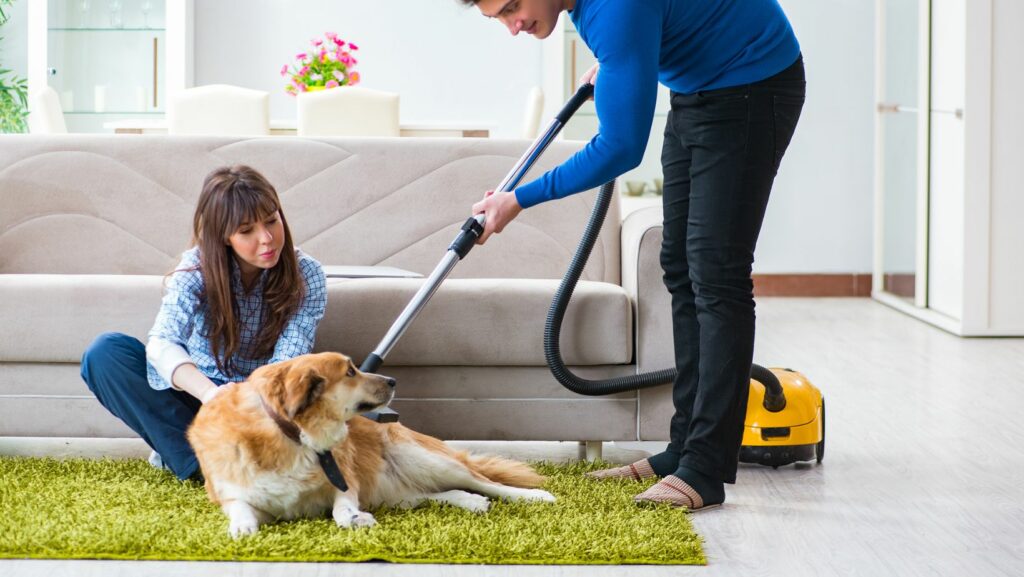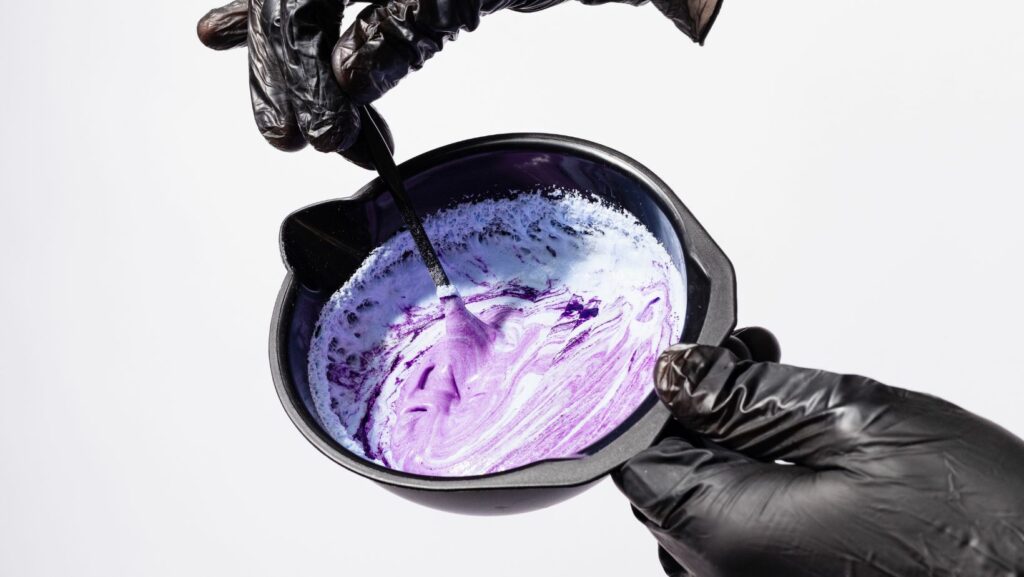As a longtime Labrador owner I’ve learned that joint health is crucial for these lovable companions. Labs are prone to various joint issues due to their size genetics and active lifestyle. I’ve discovered that proper joint care can make a significant difference in their quality of life.
Over the years I’ve seen how joint problems can affect these energetic dogs especially as they age. From hip dysplasia to arthritis many Labs face mobility challenges. But don’t worry – with the right care and preventive measures you can help your furry friend maintain healthy joints throughout their life. I’ll share essential tips and proven strategies to keep your Lab moving comfortably for years to come.
Key Takeaways
- Labradors are prone to three major joint conditions: hip dysplasia, elbow dysplasia, and arthritis, with up to 80% of senior Labs developing arthritis by age 7
- Early warning signs of joint problems include limping, stiff movement, reluctance to exercise, and difficulty getting up, which require immediate veterinary attention if observed daily
- A joint-supporting diet rich in omega-3 fatty acids, glucosamine, and chondroitin, combined with proper weight management, is crucial for maintaining healthy joints
- Low-impact exercises like swimming, controlled walks, and therapeutic activities help strengthen muscles while minimizing joint stress
- Regular veterinary checkups, appropriate medications, and environmental modifications (like non-slip mats) play vital roles in comprehensive joint care
- A structured daily routine combining exercise, nutrition, and preventive measures helps maintain optimal joint health throughout a Lab’s life
Pet Lab Joint Care
Labradors face three primary joint conditions that affect their mobility throughout life. I’ve observed these issues in numerous Labs during my veterinary practice experience.
Hip Dysplasia
Hip dysplasia occurs when the ball-and-socket joint develops abnormally, causing the hip joint to deteriorate. Labs show specific symptoms: limping after exercise, difficulty rising from rest, bunny-hopping gait while running. X-ray screening tests identify this condition in puppies as young as 4 months old.
| Hip Dysplasia Statistics in Labs | |
|---|---|
| Occurrence Rate | 15.4% |
| Average Age of Onset | 2 years |
| Hereditary Factor | 40% |
Elbow Dysplasia
Elbow dysplasia manifests as abnormal development in the elbow joint components: radius, ulna, humerus. The condition appears through visible signs: front limb lameness, reduced range of motion, elbow joint swelling. Early detection through radiographs at 6-12 months enables effective management strategies.
| Elbow Dysplasia Data | |
|---|---|
| Occurrence Rate | 12.2% |
| Bilateral Cases | 80% |
| Male-to-Female Ratio | 2:1 |
Arthritis
Arthritis develops as joint cartilage breaks down over time, leading to inflammation. Labs display characteristic symptoms: morning stiffness, reduced activity levels, joint swelling. The condition affects 80% of Labs over 8 years old, particularly in weight-bearing joints: hips, knees, elbows.
| Arthritis Impact on Labs | |
|---|---|
| Prevalence in Senior Labs | 80% |
| Average Age of Onset | 7 years |
| Weight-Related Risk | 3x higher in obese Labs |
Early Warning Signs of Joint Problems
I’ve observed numerous early indicators of joint issues in Labradors through my experience with these beloved dogs. Recognizing these signs enables prompt intervention before conditions worsen.
Changes in Movement
- Limping or favoring one leg, particularly after waking up or exercise
- Stiff gait with reduced flexibility during walks
- Bunny hopping while running or climbing stairs
- Difficulty getting up from a lying position
- Reduced interest in jumping into cars or onto furniture
- Visible shifting of weight to the front or back legs
- Swaying motion in the hips while walking
- Reluctance to engage in previously enjoyed activities
- Increased irritability when touched in specific areas
- Excessive licking or chewing at joints
- Seeking cool surfaces to lie on
- Decreased playfulness with other dogs
- Changes in sleeping positions or locations
- Resistance to grooming or handling of certain body parts
- Visible signs of discomfort when pet lab joint care or belly rubs extend to joint areas
- During morning routines
- After physical activity
- In cold or damp weather
- On different walking surfaces
- During play sessions with other dogs
| Symptom Frequency | Action Required |
|---|---|
| Occasional (1-2x/month) | Monitor closely |
| Weekly occurrences | Vet consultation |
| Daily symptoms | Immediate vet visit |
| Multiple signs present | Complete evaluation |
Natural Joint Care Solutions
Natural approaches enhance joint health in Labrador Retrievers through diet, supplements, and lifestyle modifications. I’ve found these methods particularly effective when combined with proper veterinary care.
Diet and Nutrition
A joint-supporting diet focuses on specific nutrients that promote cartilage health and reduce inflammation. I incorporate these essential components in my Lab’s diet:
- Omega-3 fatty acids (1,000-2,000mg daily) from wild-caught fish or fish oil supplements
- Glucosamine (20mg per pound of body weight) found in shellfish shells
- Chondroitin sulfate (15-20mg per pound) present in cartilage sources
- Antioxidant-rich foods: blueberries, sweet potatoes, carrots
- Collagen-rich items: bone broth, chicken feet, beef trachea
- Calculate daily calorie needs (30 calories per pound of ideal body weight)
- Measure portions using a kitchen scale
- Split meals into 2-3 servings daily
- Replace high-calorie treats with low-calorie options: green beans, carrots
- Track weight changes weekly using the same scale
- Maintain the ideal body condition score (5/9 on the standard scale)
| Weight Category | Impact on Joints | Daily Calorie Adjustment |
|---|---|---|
| Overweight | 25% more stress | Reduce by 10% |
| Ideal Weight | Normal stress | Maintain current |
| Underweight | Muscle weakness | Increase by 10% |
Exercise and Physical Therapy
I structure my Lab’s exercise routine to support joint health while maintaining muscle strength. The right combination of activities reduces joint stress while promoting mobility and flexibility.
Low-Impact Activities
Swimming offers ideal cardiovascular exercise for Labs with minimal joint impact. I incorporate controlled leash walks on soft surfaces like grass or dirt trails, limiting sessions to 20-30 minutes. Here are effective low-impact activities for Labs:
- Walking in shallow water to create natural resistance
- Controlled fetch games on even surfaces
- Gentle tug-of-war using proper technique
- Indoor obstacle courses with non-slip mats
- Swimming in calm water for 10-15 minutes
Therapeutic Exercises
Targeted therapeutic exercises strengthen the muscles supporting Lab joints. I focus on specific movements that enhance stability without causing strain:
- Standing on balance disks for 30 seconds
- Controlled sit-to-stand repetitions (5-10 times)
- Gentle range-of-motion exercises twice daily
- Walking figure-eights to improve coordination
- Step-ups on 4-inch platforms (3-5 repetitions)
| Activity Type | Duration | Frequency |
|---|---|---|
| Swimming | 10-15 mins | 2-3x/week |
| Walking | 20-30 mins | Daily |
| Balance Work | 2-5 mins | 2x/day |
| Therapy | 10-15 mins | 3x/week |
Medical Treatment Options
Veterinary intervention offers targeted solutions for managing joint conditions in Labradors through both conservative and surgical approaches. I’ve worked with numerous veterinarians to develop comprehensive treatment plans that address joint pain and mobility issues.
Medications and Supplements
Veterinarians prescribe several medications to manage joint pain and inflammation in Labradors:
- NSAIDs (Non-steroidal anti-inflammatory drugs)
- Carprofen (Rimadyl): 2mg per pound of body weight daily
- Meloxicam (Metacam): 0.1mg per kilogram on day one, followed by 0.05mg per kilogram daily
- Prescription Supplements
- Injectable polysulfated glycosaminoglycans
- High-dose glucosamine/chondroitin combinations
- Omega-3 fatty acid concentrates: 1000mg per 30 pounds of body weight
- Pain Management Medications
- Tramadol: 2-4mg per pound every 8-12 hours
- Gabapentin: 5-10mg per pound every 8-12 hours
- Total Hip Replacement (THR)
- 95% success rate in eligible candidates
- Full recovery period: 12-16 weeks
- Average lifespan of implant: 10-15 years
- Arthroscopic Procedures
- Joint cleaning and debris removal
- Cartilage repair
- Recovery time: 4-6 weeks
- Triple Pelvic Osteotomy (TPO)
- Performed on dogs under 12 months old
- Success rate: 85-90%
- Recovery period: 8-12 weeks
- Femoral Head Ostectomy (FHO)
- Alternative to THR for smaller Labs
- Recovery time: 6-8 weeks
- Physical therapy starts 2-3 days post-surgery
Creating a Joint Care Routine
A comprehensive joint care routine combines exercise, nutrition, supplements, and preventive measures to support Labrador joint health. I’ve developed this structured approach based on key components that work together:
Daily Movement Plan
- Complete 2-3 short walks (15-20 minutes each) on flat surfaces
- Incorporate 10-15 minutes of swimming twice weekly
- Practice gentle stretching exercises for 5 minutes after activity
- Allow rest periods between exercise sessions
Nutrition Schedule
- Feed 3 measured meals daily at consistent times
- Include omega-3 rich foods (salmon, sardines) twice weekly
- Add glucosamine supplements with breakfast
- Maintain fresh water access throughout the day
Weight Management Protocol
- Track weight weekly using a digital scale
- Record measurements in a monitoring journal
- Adjust portions based on activity level
- Keep treats limited to 10% of daily calories
Environmental Modifications
- Install non-slip mats on slippery floors
- Place ramps at stairs or elevated areas
- Position orthopedic beds in quiet areas
- Set up designated exercise zones with proper flooring
Regular Health Checks
| Monitoring Task | Frequency |
|---|---|
| Joint mobility assessment | Weekly |
| Weight check | Weekly |
| Gait observation | Daily |
| Vet checkup | Quarterly |
- Apply cold therapy for 10 minutes after exercise
- Provide 15-minute massage sessions 3 times weekly
- Use compression wraps when recommended
- Schedule rest days between high-activity periods
This structured routine creates a foundation for maintaining healthy joints in Labradors while accommodating individual needs. I monitor my Lab’s response to these activities through daily observation logs.
Lab Joint
Taking care of my pet lab joint care isn’t just about treating problems – it’s about creating a lifestyle that promotes long-term joint health. Through proper nutrition supplements exercise and regular vet check-ups I’ve learned that managing joint care is achievable for every Lab owner.
I’ve found that being proactive with joint care makes a significant difference in my Lab’s quality of life. By implementing the strategies and tips I’ve shared you’ll be well-equipped to help your Labrador maintain healthy joints throughout their life.
Remember that every Lab is unique and what works for one might need adjustment for another. I encourage you to work closely with your veterinarian to develop a joint care plan that’s perfect for your furry friend.


